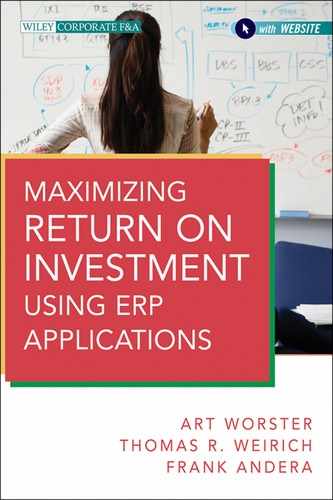Book Description
Step-by-step guidance to achieving maximum return on investment for your company
Written by Arthur Worster, Thomas Weirich, and Frank Andera, industry experts at the forefront of the business processes arena, Maximizing Return on Investment Using ERP Applications provides accountants, IT executives, and finance professionals with a new way of looking at enterprise resource planning (ERP)-driven business improvement programs. This timely book explores how leadership can view its organization as an integrated enterprise and what this change in perception might suggest. It considers various aspects of running a business and how a different approach may present new insight.
Incorporates all aspects of gaining "Return on Investment" from ERP investments
Considers change management from all angles, including working with the executive levels on defining return on investment cases, working through political and cultural issues at the executive leadership level
Includes a companion website featuring exercises, reference materials, and case studies
With the rapid implementation of ERP systems worldwide, business executives often have difficulty in determining the return on investment from such systems. Along with a companion website featuring exercises, reference materials, and case studies, Maximizing Return on Investment Using ERP Applications offers straightforward and hands-on guidance to lead your organization through the change process and ensure that the intended benefits can be achieved.
Table of Contents
- Cover
- Contents
- Title
- Copyright
- Dedication
- Preface
- Acknowledgments
- Introduction
- Part I: A Leadership Perspective
- Chapter 1: The Law of Unintended Consequences
- Chapter 2: Leadership and Change in an Integrated Business World
- Chapter 3: A Historical Business Perspective of ERP
- Introduction
- Legacy Systems (1960–1970/1990)
- It’s All about the Back Office: Getting a Single Version of the Truth (1970–1990)
- Improving the Business (1990–2000)
- The Business Suite: Enriching the Functionality (1996–2005)
- Getting Information and Analysis out of the Data Ocean (1997–2007)
- Corporate Reporting and Dashboards (2007–Today)
- The Era of Governance: Implications for the Future
- Summary
- Notes
- Part II: Contextual Analysis
- Part III: A New Program Governance Approach
- Postscript
- About the Authors
- About the Website
- Index
